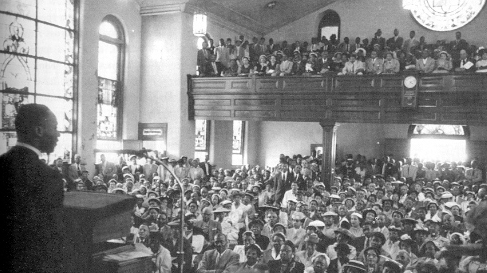With December 5th marking the 55th anniversary of Rosa Park’s triumphant refusal to give up her seat to a white man on a Montgomery bus, it was only fitting that the movie I chose to watch for class was “The Long Walk Home”. Based around the Montgomery Bus Boycott, this award winning film gave the audience an inside view of what life was like for those who chose to participate in the boycott. The audience gets a glimpse into the mass meetings that were held in various churches around Montgomery, showing us how religion and civil right fit together so well. We see the passionate messages given by preachers and the hymns sung by the African Americans participating in the boycott. They relied on one another in the church for support during the 361-day boycott.

Throughout the rest of the boycott, meetings were held in various churches in Montgomery, calling African Americans in and helping them gain the strength needed during the boycott. In what other ways did the church play into the specific events in the Civil Rights Movement?

One of the most obvious ways was the partnership of the institution of nonviolence and the church. It also acted against the movement in some ways, the closest example being the Memphis churches that turned away interracial groups from worship.
ReplyDeleteThe photo identified above is the original Mt. Zion A.M.E. Zion Church about three blocks from Holt Street and the Holt Street Church. I can identify them both because I have been in both. The Mt. Zion Church is currently looking for a sponsor for its potential renovation and Holt Street is now boarded up as well. Both have built bigger facilities.
Delete